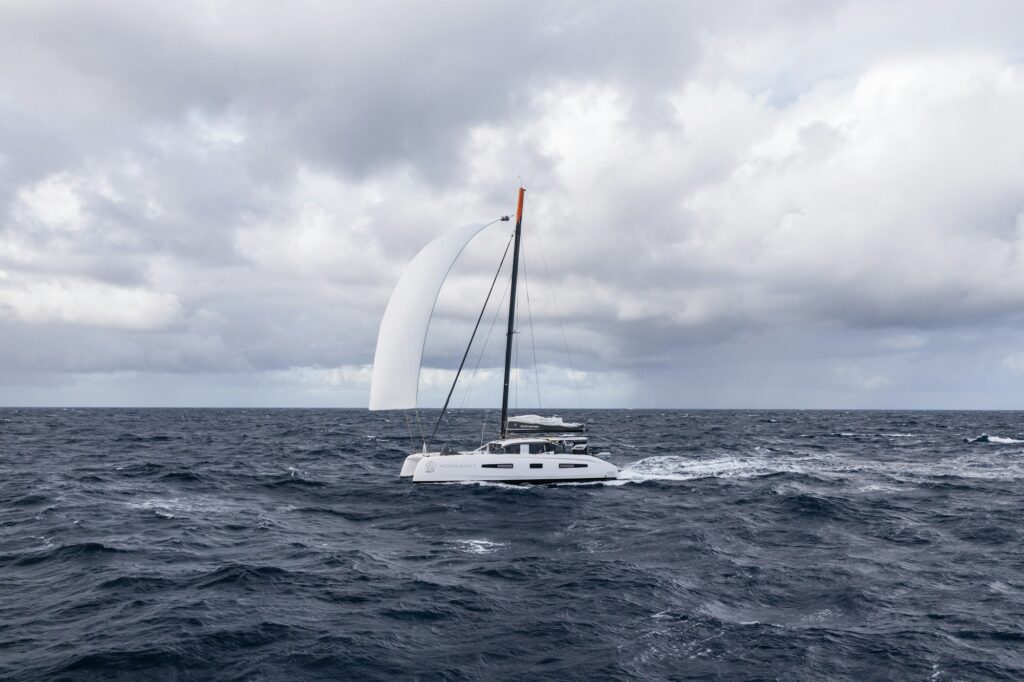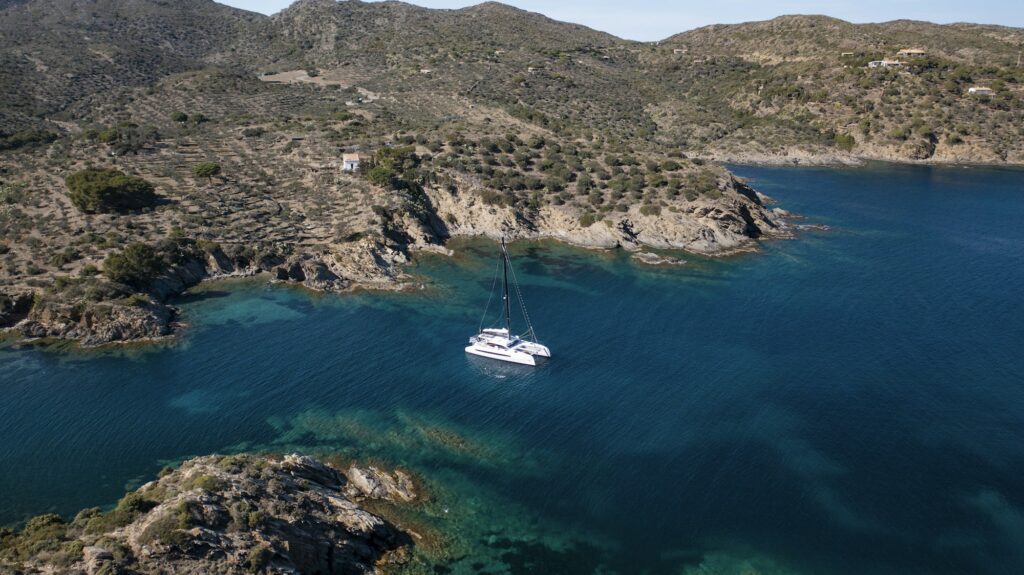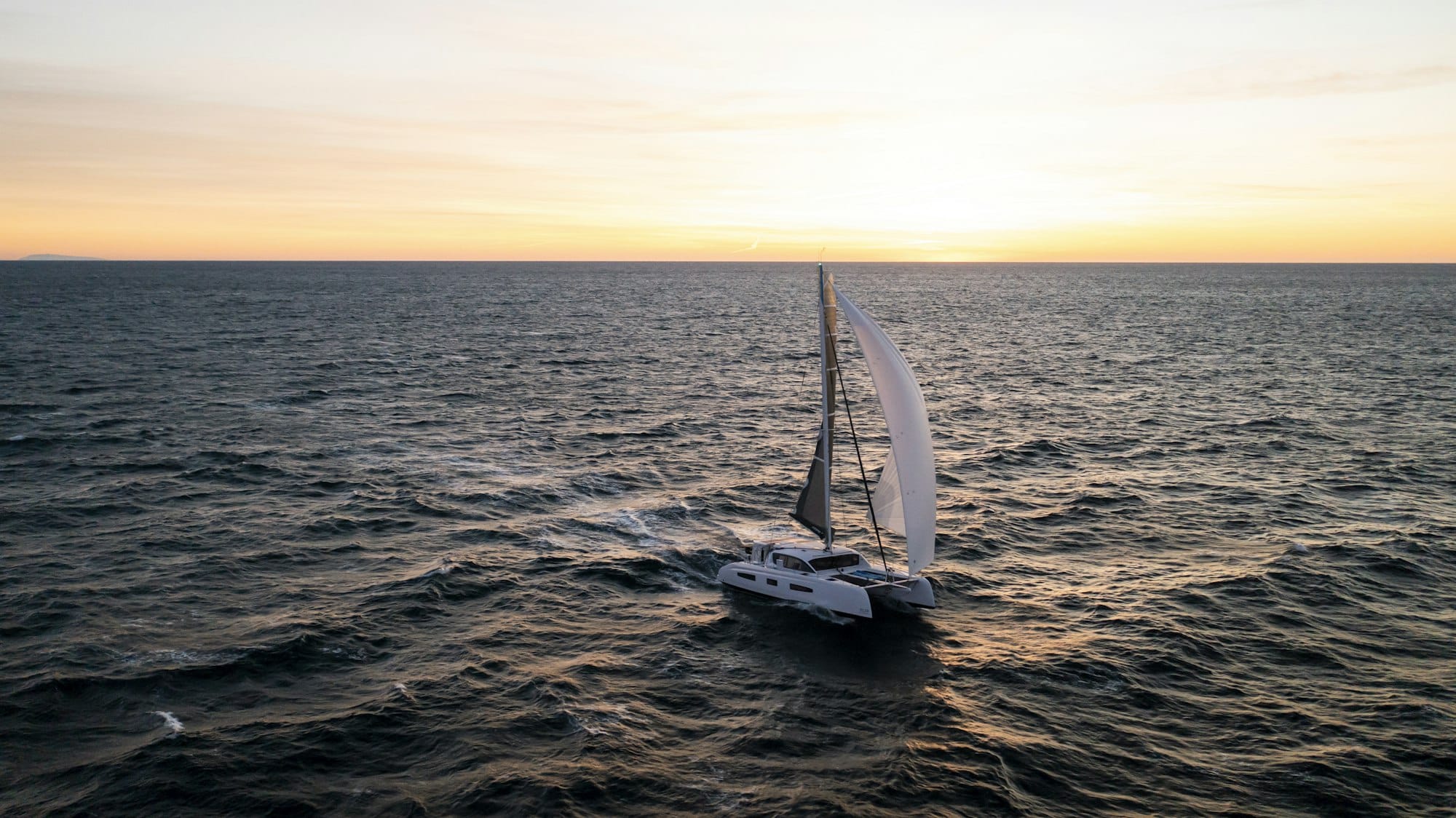
Author : Nikki Henderson
In the Autumn of 2023, I ran a ‘Webinars for Women’ mini-series on transatlantic preparations. The first session was titled: “How to approach transatlantic preparation.” As I zoomed out of the nitty gritty of canned food recipes, spare parts inventories, and preventative sail repair and took a broader look at the framework for a successful crossing, I homed in on what I think the first and most important step is: defining your goal.
When it comes to adventures, be it sailing across an ocean or going on a family backpacking holiday, it’s so easy to fall into the trap of thinking that the adventure itself is the mission. Yes, it is the theoretical ‘route’ – as in there is a start point and an end point. But is getting to the end the goal the point? Yes, in part. But I’d say most people embark on adventures with a deeper mission than just crossing a finish line. What else might they be seeking? A challenge, a reset, a break from work, travel, a health kick, building a new community, re-connecting with the present, aligning with nature, escaping civilisation, being alone, recovery from loss, building confidence – the list goes on. They have a yearning for “more”. And when you hear stories of ‘adventurers’, do they talk of the quality of the trail beneath their feet or the elation of the adventure being over? Not really. Usually, the gripping reflections are ones of discovery, self-actualisation, philosophical view changes, beauty, new perspectives, deep connection – the meaning and the point of the voyage was the journey, not the destination.
Buying and commissioning an Outremer is an adventure. For many of you, it combines a major life transition. And then the adventure continues, with every crossing, every ‘first’, every new country and experience on the water. It’s an adventure without a finish line. So, my question to you, is why are you doing it? What are you hoping to gain from this experience?
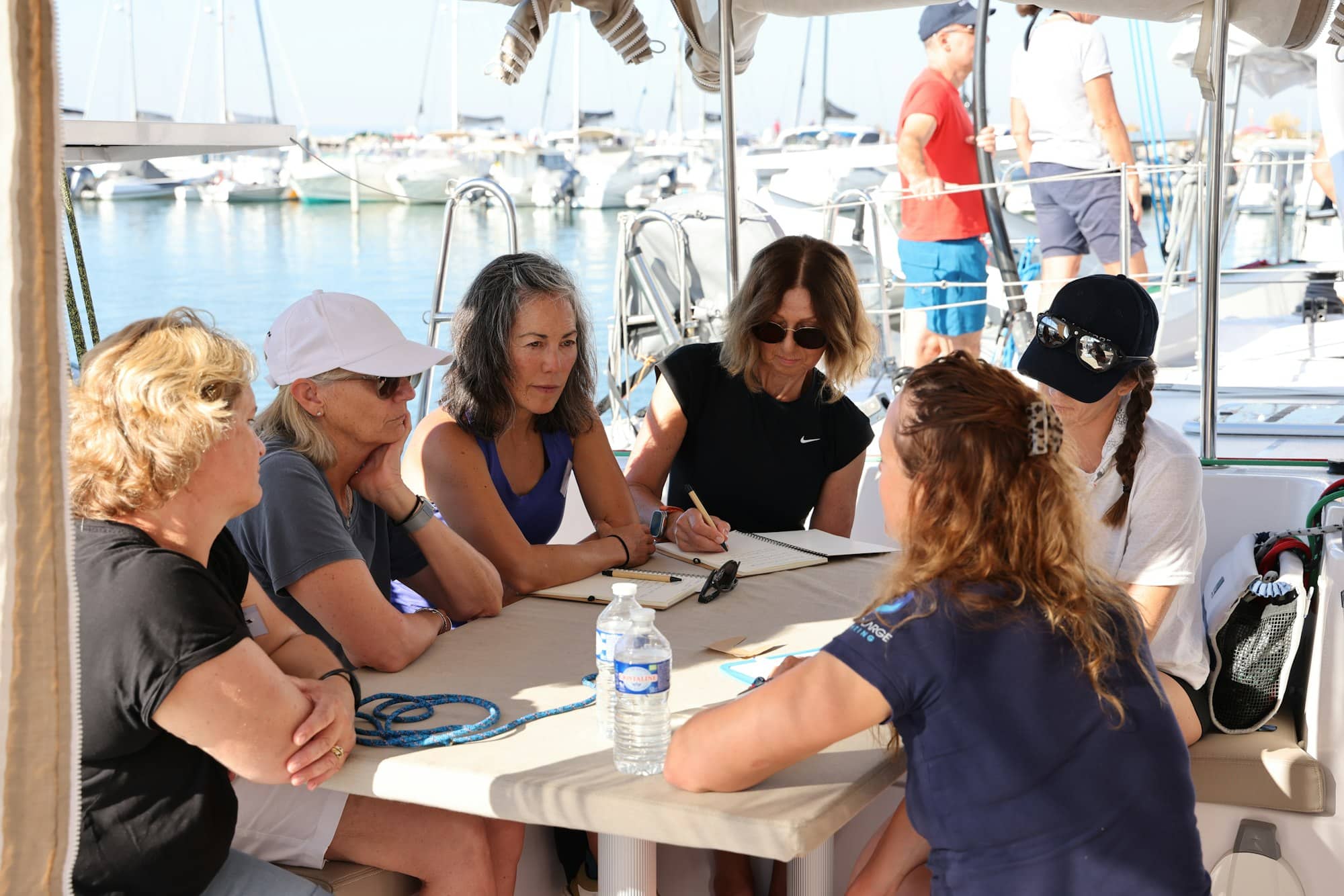
The webinar I ran focused on the importance of defining what success means for a crossing. Assuming everyone wants to get to the other side with crew and boat intact (safely), it’s useful to define these bigger goals. When you begin this process, it tends to reveal that you and your fellow boat owner/s are probably not entirely clear or aligned what the goals are. This is going to be a big problem! No football team is going to do well if half the team want to win using the tried-and-true tactics, and the other half of the team want to use it as an opportunity to practice their new plays. It’s the same with sailing across the Atlantic. If the skipper wants to use it as a confidence building exercise and wants to play it conservatively, whilst the first mate sees it as an opportunity to push the boat and finally see what its potential is – it is going to be hard to agree on decisions, and most likely no one will feel a sense of success at the end.
So, once you have worked out your own goals, it’s time to schedule an honest conversation with your partner in order to create a united ‘team mission’. Perhaps this will be a quick conversation and you are aligned on your aspirations. But assumptions are dangerous. So, it’s worth having the conversation. The last thing you would want, is for one of you to be eagerly awaiting a relaxing cruising life in which you barely sail and spend long periods of time in each anchorage, whilst the other is excited for daily sails and a fast-paced lifestyle exploring the globe.

Once you have defined what success means for you, whether that be for your passage or your boat purchase, my next suggestion is to prioritise.
Earlier in 2023, I joined my friends in the Race to Alaska. We were a team of eight. Prior to the race we sat down and discussed what ‘success’ means. The conversation came about whilst we were trying to decide on a major strategic race decision about whether to go outside or inside Vancouver Island. We were going round and round with lots of opinions for and against and couldn’t come to an agreement. So, we zoomed out. We defined success and came up with four answers: safety, fun, fast, and in keeping with the ‘spirit’ of Race to Alaska. We put them in that order. And they became a filter. Now, when faced with the conundrum of ‘to go outside’ or ‘to go inside’, we could simply run it through our ‘success meter’ and the answer was almost made for us. The inside route was less windy, we would stay in sight of our competition more, and was the original R2AK racecourse. Inside it was!
I use this example to highlight how defining success for a project will make it so much easier to make following decisions. This is why it is the always the place you should begin. Once you have defined ‘success’, the decisions like what crew to bring, or whether to fill up the diesel tanks to the maximum level, or what watch system to run will be so much easier to make and much more likely to contribute to the overall success of the passage. The same applies to the project. If your aim is to take your family around the world to experience different cultures and give your children the most incredible and life defining few years – then maybe it’s worth spending more energy on making the interior layout perfect for home schooling and spend less time ruminating whether to get a carbon rig.

Some of you still might be wondering how ‘success’ can vary so much on something like an ocean crossing. Are there really that many versions of ‘success’? Well yes. I’ve seen so many different versions of ‘success’ for a crossing. Getting there quickly tends to be quite an unusual goal. Your first crossing might be about learning the ropes. Two years in, you might aim for a captain swap and give the ‘first mate’ a go at the leadership role. You might use one crossing to focus on data collection for your polars. Another crossing might be predominantly downwind, and you might want to nail your asymmetric spinnaker work. Or you might have some softer goals. You may want to use it to start a new journalling habit. Or perhaps you want to meditate every day and practice daily gratitude. Maybe you want to use the space from land and people to read a load of books. Dig in deep. The more accurate you are on what you are seeking for, the more likely you will get it.
A nice thing about using passages as a time to define success, is that you will – (I’m guessing you will based on the fact that you are buying a Bluewater performance cruiser) – do them regularly. Measures of success change over time. People are dynamic. This is about to sound like a couples’ therapy session … but the same logic applies. People change, and creating a platform in which you can communicate how your needs and wants has changed is important. It can be hard to get these changes of ‘success’ across unless you define a time to discuss them on a regular basis. For example, as someone’s confidence increases, they may be more interested in spending time on the bow, and less on the winches at the back. It’s so easy to slip into a routine onboard based on what was the case several years ago. Mixing it up takes conscious effort. If people are growing and learning but don’t get a chance to exercise their muscles, they can get bored or resentful. In the same vein, if someone feels they are always doing more than their fair share they might get burnt out. So first define success. Then continue to ‘re-define’ success.
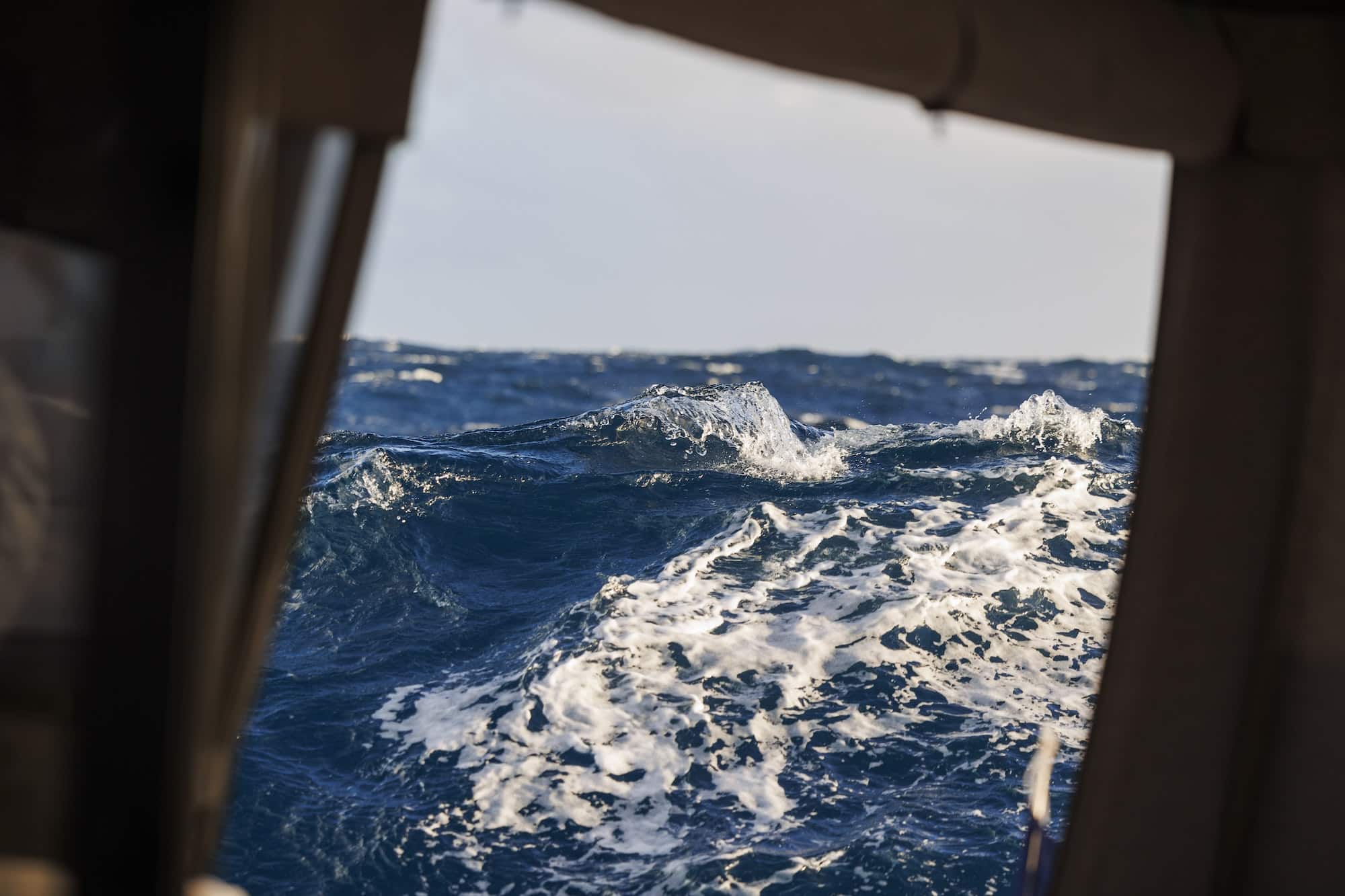
In 2013, I sailed into St Lucia with my crew of eight women. It was the first transatlantic race I skippered. We finished in last place by several days. It had taken us over three weeks to cross. We didn’t get the spinnaker up at all. And yet, much to the confusion of our competitors, we possibly had the happiest crew in the fleet. How? Because we clearly defined success prior to departure. ‘Success’ was to have a life changing adventure, to have fun, and to cross the Atlantic the ‘traditional way’ (no watermaker, fridge, autopilot). These were achievable goals. And every decision we made contributed to our mission. We took it easy at night to ensure everyone’s confidence could build naturally. We spent the penultimate day of the crossing beautifying. We slowed down our arrival to arrive in day light to set ourselves up for a better dock party.
So, if I could leave with one final thought, it would be to be true to yourselves during this process. This isn’t’ anyone else’s’ project or adventure. There are no “shoulds”, expectations, or “right and wrongs” here. Be brave. Don’t spend two seconds thinking about what anyone else might think of your dreams, and just make sure that first step is the right one for you!

